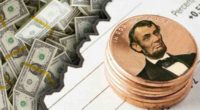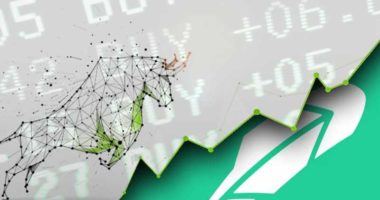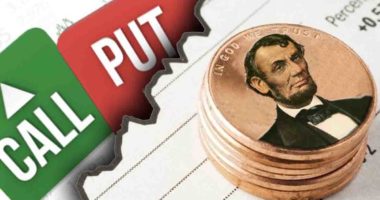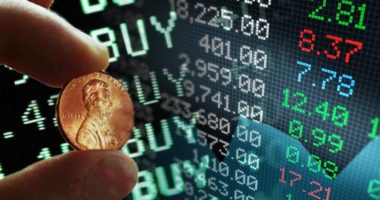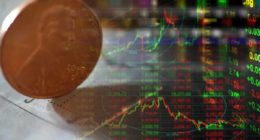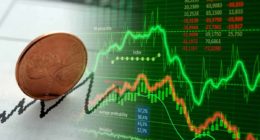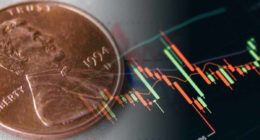What Is Stagflation?
Stagflation is an economic term to describe a situation where economic growth is slower, inflation is higher, and unemployment is relatively high. In simpler terms, stagflation is when inflation is high and GDP (gross domestic product) declines.
The latter of the two definitions of stagflation may be more relevant in 2022 and possibly 2023. High prices, lower growth, and a stagnant economy were something experienced decades ago during the 1970s. Companies reduced hiring initiatives as rising energy costs directly impacted operating & production costs.
When unemployment is high, consumers generally have less income and spend less. But during stagflation, unemployment might not be a factor, as in 2022. The July read-out for nonfarm payrolls came in at 528,000, with unemployment dropping to 3.5%, according to the U.S. Bureau of Labor Statistics. Among these figures, the number of long-term unemployed (those jobless for 27+weeks) fell to 1.1 million and accounted for 18.9% of all unemployed people in March 2022. Now we await the next round of jobs data coming up.

What Is Inflation?
You might want to know what inflation is to understand stagflation better. Inflation is a measure of how much more expensive goods and services have become over a period of time. According to the International Monetary Fund, “To measure the average consumer’s cost of living, government agencies conduct household surveys to identify a basket of commonly purchased items and track over time the cost of purchasing this basket.” These housing expenses also include rent and mortgages.

What Is CPI?
The cost of this “basket” at any one time relative to a specific base year is the Consumer Price Index or CPI. The percent change in CPI over a period of time is known as Consumer Price Inflation and is the measure that most use to identify actual Inflation. One example that the IMF gives is this:
If Base Year CPI is 100 and the current CPI is 110, inflation is 10% over that period
Is there a difference between consumer price inflation and consumer price inflation? Core focuses on more static trends in inflation. It removes prices set by the government and is watched closely by policymakers.
Why Does Stagflation Matter?
Whether we’re talking about penny stocks or stocks over $100, inflation and stagflation matter in the longer term. Sure, you’ve got individual companies that go against the broader trend. But when there are sweeping economic trends, you’ll want to know the factors in play if the trend is your friend. Stagflation can be attributed to several things that result in rising costs and, in turn, lower production rates.
Oil prices are one of the core points of interest when economists view stagflation. As we’ve seen, due to the Russia-Ukraine conflict, international sanctions on Russian oil have strained the oil market. Looking back at the 70s, OPEC (the Organization of Petroleum Exporting Countries) put embargos on Western countries, causing a rise in global energy prices. This created a snowball effect that hurt transportation thanks to rising fuel costs, which made consumer goods cost more to stock shelves. Ultimately, this led to layoffs, further contributing to the economic theory.
In the 1970s, factors related to monetary and fiscal policies added to the situation. The Fed Chairman at the time, Arthur Burns, eased monetary policy in response to higher commodity prices. This allowed inflation to continue.
Stagflation can also put pressure on bond prices while also muting valuations. Households earn less money. Yet another snowball effect comes to light as slower spending can impact corporate revenue and expand the overall impact across global economies.
Example of Stagflation: The Nixon Shock
The best example of stagflation came during the Nixon era, which saw the U.S. remove itself from the gold standard. It also saw a 90-day freeze on waves and prices and a 10% tariff on imports. Attempting to combat stagflation, the Federal Reserve raised the Fed Funds Rate to fight inflation but lowered it to combat a recession. This start-stop policy strategy didn’t help the overall economy and ultimately increased inflation altogether. In addition, OPEC’s oil embargo on the US triggered price spikes in energy. Businesses passed this cost along to consumers while also curbing production. A recession ensued in the early 1980s to reduce the spiraling inflation.
As you’ll see on the S&P Index chart below, the period between the end of 1971 through 1982 saw declining market prices. Since the S&P 500 ETF (NYSE: SPY), Nasdaq ETF (NASDAQ: QQQ), and Dow ETF (NYSE: DIA) weren’t “born” yet, we’ll go directly off of the SPX:

The hope right now is that those in charge of economic policy have a better handle on current conditions than the case 4 decades ago.
Will We See Stagflation In 2022?
Excessive money printing, rising energy prices, economies still recovering from the pandemic, supply chain constraints, sanctions on Russian products, geopolitical unrest, and more are now commanding headlines. Is the world in for another recession? Will inflation turn into stagflation? What comes next?
The latest CPI and economic data are causing significant uncertainty in already fragile stock market conditions. CPI rose 8.5%. Month-over-month, CPI was also up 1.3%. Peeling back the data, food prices jumped 1.1% MoM and was the 7th consecutive monthly increase of 0.9% or more. The food at home index jumped double-digits by 13.1% YoY and the most significant 12-month jump since 1979. The index for “other food at home” jumped 15.8%, with the index for cereals and baking products climbing 15% over the year. Ironically, energy prices fell 4.6% in July after rising 7.7% in June. However, year-over-year, the energy index jumped 32.9%, with the fuel oil index climbing 75.6% over the same period.
Now the question is: Have we reached peak inflation, and is there any chance of stagflation?
The August Jackson Hole meeting sent a shockwave across markets recently following comments from Fed Chair Jarome Powell.
“While the lower inflation readings for July are welcome, a single month’s improvement falls far short of what the Committee will need to see before we are confident that inflation is moving down…In current circumstances, with inflation running far above 2 percent and the labor market extremely tight, estimates of longer-run neutral are not a place to stop or pause…Our aim is to avoid that outcome by acting with resolve now,” Powell said.
Meanwhile, other Fed members expressed a more hawkish tone. The Fed’s John Williams told the Wall Street Journal on Tuesday, “I do think with demand far exceeding supply, we do need to get real interest rates…above zero. We need to have somewhat restrictive policy to slow demand, and we’re not there yet.”
This latest Fed speak sets the stage for what’s to come later this year.
Should You Worry About Stagflation?
As the Federal Reserve increases rates in a high inflationary environment and supply chain issues persist, it presents a unique situation. “Bond king” Bill Gross recently told CNBC that he thinks the Federal Reserve is “sort of handcuffed in terms of what they can do” because of prior monetary policy decisions. He explained that he sees a possibility of stagflation. Will Gross be correct in this hypothesis?
Whether it’s inflation, stagflation, or something else, any negative impact on economic growth is concerning. The critical part is understanding what factors are in play during periods like this and knowing how to navigate the stock market effectively.
Even in a stock market crash, there are ways to continue making money. You need to have an idea of where to look for opportunities. Now that you have a basic understanding of stagflationary metrics, is it something that concerns you, or do you know how to plan for it and profit from it? Leave us a comment below.
If you enjoyed this article and you’re interested in learning how to trade so you can have the best chance to profit consistently then you need to checkout this YouTube channel. CLICK HERE RIGHT NOW!!
